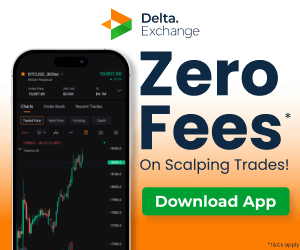The world economy is bracing for shockwaves. President Donald Trump’s 2025 tariff blitz, slapping a universal 10% tariff on all imports into the U.S. plus an escalating tariff war with China, has rattled markets, sinking stocks and weakening the dollar.
Amid the turmoil, cryptocurrencies are emerging as unlikely winners. Here’s why Bitcoin, XRP, and Solana could capitalise on this upheaval and how they might reshape finance in a fractured world.
Bitcoin: The Unshakable Safe Haven
Investors fleeing tariff-induced chaos are doubling down on Bitcoin. Dubbed “digital gold,” its fixed supply of 21 million coins offers shelter from inflation fears and dollar devaluation. Notably, Trump’s proposed U.S. Strategic Bitcoin Reserve, a first-of-its-kind plan, could cement its role as a national asset.
Despite a 10% price drop post-tariff announcement, Bitcoin quickly rebounded, mirroring its resilience during past trade wars. MicroStrategy and other firms keep stockpiling BTC, betting on long-term gains. However, regulatory ambiguity lingers: Will Congress back Trump’s crypto push?
XRP: Fast-Tracking Global Payments
Tariffs aren’t just taxes; they’re trade bottlenecks. Enter XRP, Ripple’s lightning-fast payment solution. Processing cross-border transactions in 4 seconds for fractions of a penny, it’s a lifeline for businesses dodging sluggish, costly SWIFT networks.
XRP’s recent 50% surge followed two key events: the SEC dropping its lawsuit against Ripple and its inclusion in Trump’s crypto reserve. Over 300 banks already use XRP in regions like Asia and the Middle East. Yet critics warn: Its ties to Ripple Labs risk centralisation, potentially alienating decentralisation purists.
Solana: Building the Next Financial Infrastructure
Solana’s blazing speed and rock-bottom fees are stealing Ethereum’s spotlight. Handling 65,000 transactions per second, its blockchain hosts DeFi apps, NFT platforms, and supply-chain tools, all critical as tariffs force industries to innovate.
Trump’s nod to Solana in the strategic reserve sparked a rally, with SOL outpacing Ethereum in 2024 transaction volume. Developers flock to its ecosystem, launching projects like Serum, a decentralised exchange. Still, past network outages haunt its reputation.
Why Solana Edges Out Ethereum
Ethereum’s dominance faces a challenger. Solana’s sub-cent fees and rapid processing starkly contrast with Ethereum’s pricier gas costs, a decisive factor as tariffs squeeze margins. Trump’s pro-Solana stance amplifies this advantage, aligning it with U.S. strategic interests.
Moreover, Solana’s scalability suits real-time applications, from tariff-adjusted supply chains to tokenised assets. While Ethereum evolves, Solana’s current tech stack meets urgent market needs, making it a pragmatic pick for a cost-conscious era.
Tariffs and the Crypto Domino Effect
Trump’s policies aim to protect U.S. interests but risk accelerating dedollarization. China and BRICS nations are already exploring alternatives, weakening the dollar’s global grip. Cryptocurrencies, untethered to any nation, could fill the void.
Meanwhile, the SEC’s softer stance under Trump’s appointees has relaxed regulatory restrictions. This shift, paired with reserve plans, could funnel billions into crypto. Yet risks persist: Trade retaliations, market panics, or policy reversals might upend progress.
Risks and Rewards in a Volatile Era
Short-term volatility plagues all three assets. Bitcoin’s price swings, XRP’s regulatory scars, and Solana’s tech hiccups remind investors that high rewards demand high risk tolerance.
However, the long-term outlook intrigues. If tariffs erode traditional finance, Bitcoin could solidify as a reserve asset, XRP might power global trade, and Solana may underpin a new digital economy. For now, diversification remains key; betting on one horse risks missing the race.
As the world order fractures, cryptocurrencies are no longer fringe experiments but strategic tools. Bitcoin, XRP, and Solana each offer unique shields and swords in this new economic battleground.
Written By Fazal Ul Vahab C H



